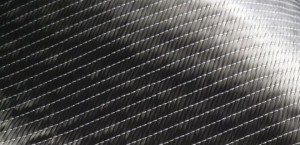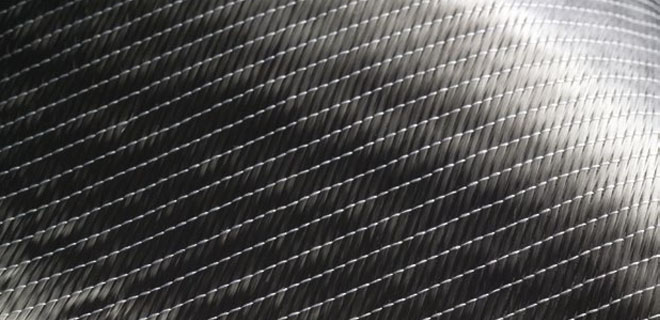 KARL MAYER exhibited at Techtextil 2015 as an expert partner in the development of innovative solutions, which are setting new standards in many areas of everyday life and industry.
KARL MAYER exhibited at Techtextil 2015 as an expert partner in the development of innovative solutions, which are setting new standards in many areas of everyday life and industry.
On its stand, E 18 in hall 3.0, covering an area of 80 m2, there was a meeting room in the shape of a tower with a spiral entrance. This was made entirely from warp-knitted spacer textiles and is designed to create a peaceful sanctuary. The 3D textile has a special construction to enable it to act as a sound-absorbing material. Textiles made from carbon and glass fibres for reinforcing composite materials (Fig. 1) was also been another topic on the stand of this textile machinery manufacturer. A futuristic installation demonstrated the process from production on the machine to resin treatment. The Swing rocking chair designed by the Paulsberg Design Studio (Fig. 2) shows what attractively shaped products can be produced by combining a reinforcing textile with the right matrix material. This comfortable chair is made from concrete with a reinforcing material made from a biaxial carbon-fibre textile and invites the visitors to stay and relax for a while. They will be able to learn everything there is to know about processing textile reinforcement into furniture by watching a video at the infopoint. In addition to Paulsberg’s film, another will also be shown illustrating the design features and operating sequences of multiaxial warp knitting machines. Anyone who wants to be both comfortable and sporty at the same time got their money’s worth on KARL MAYER’s stand. With a collection of functional fabrics for the sports sector, warp-knitted textiles demonstrated all their special features in terms of performance enhancement, perspiration wicking and heat management – from shirts to shoes (Figs. 3 + 4). The products being shown on KARL MAYER’s stand gave just a small insight into the wide range of applications in which textiles produced on the machines developed by this company can be used. They may also be used, among others, in the building industry (Fig. 5), medical and health sector, agriculture, aircraft construction and the automotive industry










